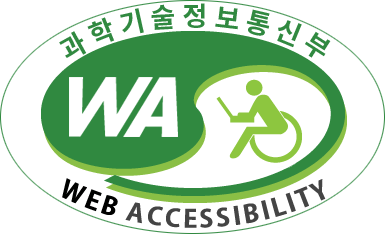요약문 (국문) ▢ 연구 배경 ○ 지난 몇 년간 ‘단초점 안경 렌즈 전자상거래’는 법률상 불허 사항과 국민 눈 건강을 우려로 정부에서 검토 보류 결정 사항이었음(’19-’21.) ○ ‘21년 한걸음 모델’의 과제로 선정되어 합의문을 발표(’21.11.)하였으며, ‘22년 ‘규제 혁신 전략’ 추진 안건으로 선정됨 ○ 규제 혁신을 위한 과학적·객관적 근거 생성 연구 방향 검토(’22. 5월) - 국민 눈 건강에 미치는 영향에 대한 가이드라인 개발 연구용역 추진, 가상 안경 착용 기술을 현재 안경점에서 활용할 수 있도록 협업
▢ 연구 목적 통신판매와 안경점에서 구입한 단초점 도수 안경의 정확도, 안전성 및 만족도를 비교하고, 전자상거래 시범사업을 위한 가이드라인을 개발하였다.
▢ 연구 방법 ○ 다기관, 전향적 비교효과 연구 (1) 연구에 참여를 원하는 안경 착용자는 실시기관의 안과 외래를 방문하여 굴절이상 이외의 안과 질환과 동공 간 거리에 영향을 주는 안면 및 안와 질환이 없음을 확인하고, 안경처방전 발급받기 (2) 발급받은 안경처방전으로 통신판매와 안경점에서 안경 구입. 이때, 안경은 안경처방전 발급으로부터 2주 이내에 각각 다른 매장에서 통신판매 1개, 안경점 1개, 총 2개의 안경을 구입 (3) 안경 구입 후 2주 이내(+1주)에, 안과 외래를 방문하여 안경 착용자의 동공 간 거리와 착용한 안경의 광심 간 거리의 일치 여부를 확인. 이때, 안과 외래 방문 전 구입한 안경의 추가 교정은 이루어지지 않아야 함 (4) 대상자별로 임의로 안경 착용 순서를 배정받고 먼저 배정받은 안경을 착용 1개월(4주) 후 착용한 안경에 대한 만족도 조사 (5) 두 번째 안경으로 교체 착용 1개월 후 안경에 대한 만족도 조사 (6) 2가지 안경은 자유롭게 사용 1개월 후 안경에 대한 만족도와 선호도 조사
○ 온라인 안경 판매 관련 가이드라인 마련 - 국내외 사례 조사 및 문헌, 법령 검토 - 이해당사자로 구성된 자문위원회 운영으로 가이드라인(안)에 대한 검토 및 자문 - 정책결정자 및 이해관계자 의견 수렴 및 정책 수립의 참고 자료로 활용
▢ 연구 결과 제작 환경에 따른 단초점 근시 안경의 비교 연구 - 연구대상자 236명의 모집 - 연구 대상자 등록 후 최종 추적 관찰 기간 4개월 - 안경 제작의 정확도 비교 동공간 거리와 광심간 거리의 일치도 비교 결과 온라인 제작 안경과 안경원 제작 안경 간의 유의한 차이는 없음(p=0.1172). 동공간 거리와 광심간 거리의 오차에 대한 두 제작 방법에 따른 차이 비교 결과 유의한 차이가 없음(p=0.194) - 안경 착용 시의 만족도 안경원 제작 안경과 온라인 제작 안경 간의 착용 만족도는 안경원 제작 안경이 유의하게 높음 (p<0.001) - 안경 부작용/불편한 점 안경원 안경에 비하여 온라인 안경의 부작용 발생 비율이 유의하게 높음(p<0.001) 특히 착용 시 안경테 조정(fitting)에 대한 차이가 크게 나타남( 안경원 제작 안경 2.54 %, 온라인 제작 안경 18.22%)
단초점 근시 안경의 온라인 판매 시범사업 실무 가이드라인 국외 규정과 지침, 전문가 자문을 종합하여 온라인 안경 판매를 위한 법령, 온라인 안경 판매 대상, 온라인 안경 제작 시 준수 사항, 온라인 안경 판매 시 준수 사항의 4가지 영역에 대한 시범사업 실무 가이드라인을 개발함
▢ 결론 및 정책적 제언 온라인으로 판매하는 도수 안경과 안경원에서 판매하는 렌즈의 제작 정확도의 차이는 나지 않으나 직접 대면이 필요한 안경 조정(fitting)의 차이에서 온라인 안경의 만족도는 낮게 나타남. 도수 안경의 온라인 판매에 따른 소비자의 이익이나 불이익은 단순히 경제성과 편리성으로만 평가하기 어려운 접이 있어 적절한 품질을 담보할 수 있는 제도와 기존 안경 업계에 미치는 영향도 고려할 필요가 있음. 추가로 단기적인 비교 연구에서 드러나지 않는 국민의 눈 건강에 영향을 평가할 수 있는 지표를 개발하여 시범사업에서 측정할 수 있도록 하는 장치를 고려할 것을 제언함
주요어 규제 혁신, 도수 안경, 전자상거래, 가이드라인, 시범사업 ▢ Background In recent years, "monofocal spectacles e-commerce" has been a subject of government scrutiny due to legal prohibitions and concerns over public eye health (2019-2021). However, in 2021, it was selected as a task for the "One Step Model," and an agreement was announced in November 2021. In 2022, it was selected as an agenda item for the "Regulatory Innovation Strategy." Consequently, the need arose for scientific and objective evidence to support regulatory innovation. Research to develop guidelines assessing the impact on public eye health was initiated, and collaboration was pursued to enable the use of virtual eyewear fitting technology in optical shops.
▢ Objective The objective of this study is to compare the accuracy, safety, and satisfaction of monofocal spectacles purchased through e-commerce and optical shops, and to develop guidelines for an e-commerce pilot project.
▢ Methods ■ Study Design: A multicenter, prospective comparative effectiveness study. ■ Participant Recruitment: Participants who wish to take part in the study visit an ophthalmology outpatient clinic to confirm that they have no other eye diseases affecting refraction or any facial or orbital conditions that may affect interpupillary distance. After receiving a prescription, they purchase glasses from both an online retailer and an optical shop within two weeks. ■ Evaluation: After purchasing the glasses, the alignment of the interpupillary distance with the optical center distance of the glasses is assessed. Satisfaction with the glasses is measured after wearing each pair for one month, and a final satisfaction and preference survey is conducted after one month of free use of both pairs. ■ Guideline Development: The study involves reviewing domestic and international cases, literature, and regulations, and operating an advisory committee composed of stakeholders to draft and review guidelines. These guidelines will serve as reference material for policymakers and stakeholders. ■
▢ Results ■ Comparison of Manufacturing Accuracy: There was no significant difference in the alignment of interpupillary distance and optical center distance between glasses made by online retailers and optical shops (p=0.1172). The error comparison between the two manufacturing methods also showed no significant difference (p=0.194). ■ Satisfaction with Glasses: Satisfaction with glasses made by optical shops was significantly higher than those made online (p<0.001). ■ Adverse Effects: The incidence of adverse effects was significantly higher for online glasses compared to those made by optical shops (p<0.001), with a notable difference in the need for frame fitting adjustments (optical shop: 2.54%, online: 18.22%).
▢ Conclusions While there is no difference in the manufacturing accuracy between prescription glasses sold online and those sold in optical shops, the need for in-person fitting adjustments results in lower satisfaction with online glasses. The benefits and drawbacks of online sales of prescription glasses cannot be evaluated solely based on economic efficiency and convenience. It is necessary to consider establishing a system that ensures adequate quality and the impact on the existing optical industry. Additionally, it is recommended to develop indicators that can assess the impact on public eye health, which were not captured in this short-term study, for use in the pilot project.
▢ Acknowledgement This Research was supported by National Evidence-based Healthcare Collaborating Agency(NECA) funded by the Ministry of Health and welfare(grant number NA23-015, NA24-004).
Key words Regulatory innovation, prescription glasses, e-commerce, guidelines, pilot project 요약문 ⅰ
Executive Summary iv
Ⅰ. 서론 1 1. 연구 배경 1 2. 연구 목적 2 2.1. 전향적 비교 연구 2 2.2. 단초점 근시 안경의 온라인 판매 시범사업 가이드라인 2
Ⅱ. 선행연구 및 현황 3 1. 온라인 판매 안경 선행연구 3 1.1. 국외연구 3 1.2. 국내연구 4 2. 온라인 판매 안경 현황 5 Ⅲ. 연구 방법 6 1. 제작 환경에 따른 단초점 근시안경 비교연구 6 1.1. 연구 설계 6 2. 단초점 근시안경의 온라인 판매 가이드라인 11 2.1. 연구방법 11 2.2. 국외 안보건 체계 11 2.3. 국외 온라인 안경 판매 규정 현황 13 2.4. 가이드라인을 위한 검토 사항 21
Ⅳ. 연구 결과 29 1. 단초점 안경의 비교 연구 29 1.1. 비교연구의 진행 29 1.2. 비교연구 결과 30 2. 온라인 안경 판매 시범사업 실무 가이드라인(안) 35
Ⅴ. 고찰 및 결론 43 1. 연구결과 요약 43 1.1. 비교연구 결과 43 1.2. 시범사업을 위한 실무 가이드라인 개발 44 2. 연구의 의의 44 3. 연구의 제한점 44 4. 결론 및 제언 45
Ⅵ. 참고문헌 47
Ⅶ. 부록 48 1. 설문조사지 49 |

 · 저작자표시
· 저작자표시 · 출처표시
· 출처표시



















 한국보건의료연구원
한국보건의료연구원